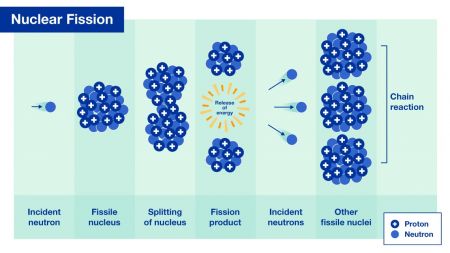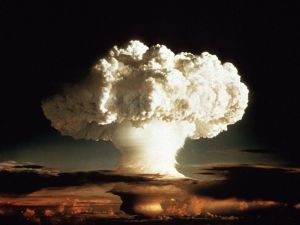Nuclear Fission
Nuclear fission is a reaction where the nucleus of an atom splits into two or more smaller nuclei.
- The fission process often produces gamma photons, and releases a large amount of energy.
Fission is considered a form of nuclear conversion because the resulting fragments (or "daughter atoms") are not the same element as the original parent atom.
- The two or more nuclei that are produced are usually comparable to each other, but still different in some way
Most fissions are binary fissions (producing two charged fragments), but occasionally three positively charged fragments are produced.
The products of nuclear fission, however, are highly radioactive, and remain so for significant amounts of time.
Nuclear fission can be used as a weapon, creating what has been coined a fission bomb, or "atomic bomb."
This type of explosion is designed to liberate as much energy as possible as rapidly as possible.
Comparatively, fission bombs are at the very least thousand of times more explosive than a comparable mass of chemical explosive.
While the fundamental physics of the fission chain reaction in a nuclear weapon is similar to the physics of a controlled nuclear reactor, the two types are engineered quite differently. A nuclear bomb is designed to release all its energy at once, while a reactor is designed to generate a steady supply of power. While overheating of a reactor can lead to, and has led to, meltdown and explosions, it is impossible for a nuclear reactor to explode with the same destructive power as a nuclear weapon.
Nuclear fission produces toxic side effects, including beta radiation.


